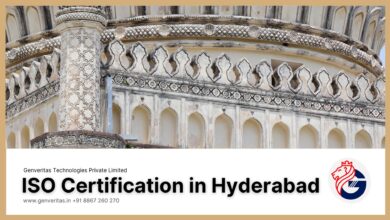How to Get Your ISO Certification Fast in Saudi Arabia

Introduction
Are you looking to get your ISO Certification ? Congratulations on taking the first step towards improving the quality management of your organization! ISO certification is a globally recognized standard that demonstrates your commitment to quality, customer satisfaction, and continuous improvement. While the process may seem daunting, this blog post will guide you through the necessary steps to obtain your ISO certification quickly and efficiently. So let’s start our journey towards achieving ISO certification
Understanding ISO Certification
ISO (International Organization For Standardization) Is An Independent, Non-Governmental International Organization That Sets Standards To Ensure The Quality, Safety, And Efficiency Of Products, Services, And Systems. The Certification Is Awarded To Organizations That Meet The Requirements Of Various ISO Standards, Such As ISO 9001 For Quality Management Systems, ISO 14001 For Environmental Management Systems, Or ISO 45001 For Occupational Health And Safety Management Systems.
ISO Standard is not mandatory, but it can provide numerous benefits to organizations, including enhanced credibility, increased customer satisfaction, improved processes, and access to new markets. It demonstrates your commitment to meeting customer requirements, continuous improvement, and regulatory compliance.
Choosing the Right ISO Standard for Your Organization
There Are Several ISO Standards Available, Each Catering To Different Aspects Of Organizational Management. Before Diving Into The Certification Process, It’s Crucial To Identify The Most Relevant ISO Standard For Your Organization. Consider Your Industry, The Nature Of Your Business, And The Requirements Of Your Stakeholders. ISO 9001 Is A Popular Choice For Organizations That Prioritize Quality Management, While ISO 14001 Is Suitable For Those Focusing On Environmental Management. For Occupational Health And Safety, ISO 45001 Is The Standard Of Choice. Conduct Thorough Research And Consult With Experts To Ensure You Select The Right ISO Standard For Your Organization.
Identify Current Gaps
Once You’ve Chosen The Appropriate ISO Standard, It’s Time To Assess Your Organization’s Current Status And Identify Any Existing Gaps. Conduct A Gap Analysis To Compare Your Current Practices Against The Requirements Of The Chosen ISO Standard. This Analysis Will Provide You With A Clear Understanding Of What Needs To Be Addressed Before Initiating The Certification Process.
Consulting With ISO Experts Or Hiring A Certified ISO Consultant Can Be Immensely Beneficial During This Stage. These Professionals Will Help You Navigate The Complexities Of The ISO Standards And Identify Areas That Require Improvement. They Can Provide Insights, Recommend Solutions, And Streamline The Process To Ensure A Faster Certification Turnaround Time.
Create an Implementation Plan
With a thorough understanding of the gaps, it’s time to create a detailed implementation plan. This plan will outline the necessary steps, responsibilities, and timelines required to address the identified gaps and achieve ISO compliance. Your implementation plan should include the following key elements:
- Assign Responsibilities:
Clearly define the roles and responsibilities of individuals involved in the implementation process. Assign a project manager who will oversee the entire certification journey and ensure timely execution.
- Establish Objectives:
Set clear objectives that align with the ISO standard you are pursuing. These objectives should be specific, measurable, achievable, relevant, and time-bound (SMART). Communicate these objectives to all employees to create a shared understanding and commitment towards achieving ISO certification.
- Develop Procedures and Processes:
Document your existing procedures and processes and align them with the requirements of the chosen ISO standard. Identify any gaps and document new procedures or updates required to fill those gaps.
- Provide Employee Training:
Conduct training sessions to educate employees on the ISO standard, its requirements, and the changes that will occur in their day-to-day activities. Ensure that all employees are aware of their role in maintaining the ISO certification once achieved.
- Establish Documentation Control:
Implement a robust documentation control system to manage and control your organization’s documentation. This system should include document version control, document accessibility, and a defined process for document approval and distribution.
- Conduct Internal Audits:
Regularly perform internal audits to assess your organization’s compliance with the ISO standard. These audits will identify any non-conformities or areas that need improvement before the external audit.
Obtain External Audit Services from an Authorized Certification Body
Once You Have Implemented The Necessary Changes And Are Confident In Your Organization’s Readiness, It’s Time To Engage The Services Of An Authorized Certification Body. These Certification Bodies Are Accredited By The International Accreditation Forum (IAF) And Have The Expertise To Formally Assess Your Organization’s Compliance With The ISO Standard.
During The External Audit, The Certification Body’s Auditors Will Review Your Documentation, Interview Employees, And Verify The Implementation Of The ISO Requirements. They Will Provide Recommendations For Improvement And Identify Any Non-Conformities That Must Be Addressed Before Certification Can Be Granted.
Continuous Improvement and Maintenance of ISO Certification
Congratulations, You Have Successfully Obtained Your ISO Certification! But The Journey Doesn’t End Here. ISO Certification Requires Continuous Commitment And Improvement To Maintain Its Validity. Here Are A Few Steps To Ensure The Sustained Success Of Your ISO Certification:
- Establish an Internal Audit Program:
Implement A Structured Internal Audit Program To Regularly Assess Your Compliance With The ISO Standard. This Program Should Include Documented Processes For Planning, Conducting, Reporting, And Taking Corrective Actions Based On Audit Findings.
- Conduct Management Reviews:
Hold Regular Management Reviews To Evaluate The Performance Of Your Quality Management System. This Review Process Ensures That Your Organization’s Objectives Are Met, Identifies Opportunities For Improvement, And Confirms The Continued Effectiveness Of Your ISO Processes.
- Employee Engagement and Training:
Engage Employees In The Ongoing Maintenance Of ISO Certification By Conducting Training Sessions, Awareness Programs, And Promoting A Culture Of Continuous Improvement. Ensure That Employees Understand The Importance Of Adhering To ISO Standards And Actively Participate In Its Implementation And Maintenance.
- Monitor and Measure Key Performance Indicators (KPIs):
Define And Monitor Kpis That Align With Your Organization’s Objectives And ISO Requirements. These Kpis Will Help Track Your Progress, Identify Areas Of Improvement, And Maintain A High Level Of Performance.
- Stay Updated with Changes:
- Continuously Monitor Updates And Revisions To The Chosen ISO Standard. Maintain Awareness Of Any Modifications That May Impact Your Organization And Ensure Timely Compliance With New Requirements.
“Obtaining ISO Certification In Saudi Arabia Necessitates Meticulous Planning, Diligent Execution Of Plans, And A Steadfast Commitment To Continuous Improvement.” To Speed The Certification Process, It Is Critical To First Pick The Suitable ISO Standard. After Deciding On A Standard, The Following Step Is To Identify Any Current Gaps In Your Organization’s Operations. Following This Assessment, You Should Develop A Comprehensive Implementation Strategy That Details The Processes And Actions Required To Effectively Bridge These Gaps. Furthermore, Hiring External Audit Services Might Substantially Assist In The Certification Path. These External Audits Provide An Objective Examination Of Your Processes And Assist Guarantee That Your Firm Meets The Standards Of The ISO Standard.





